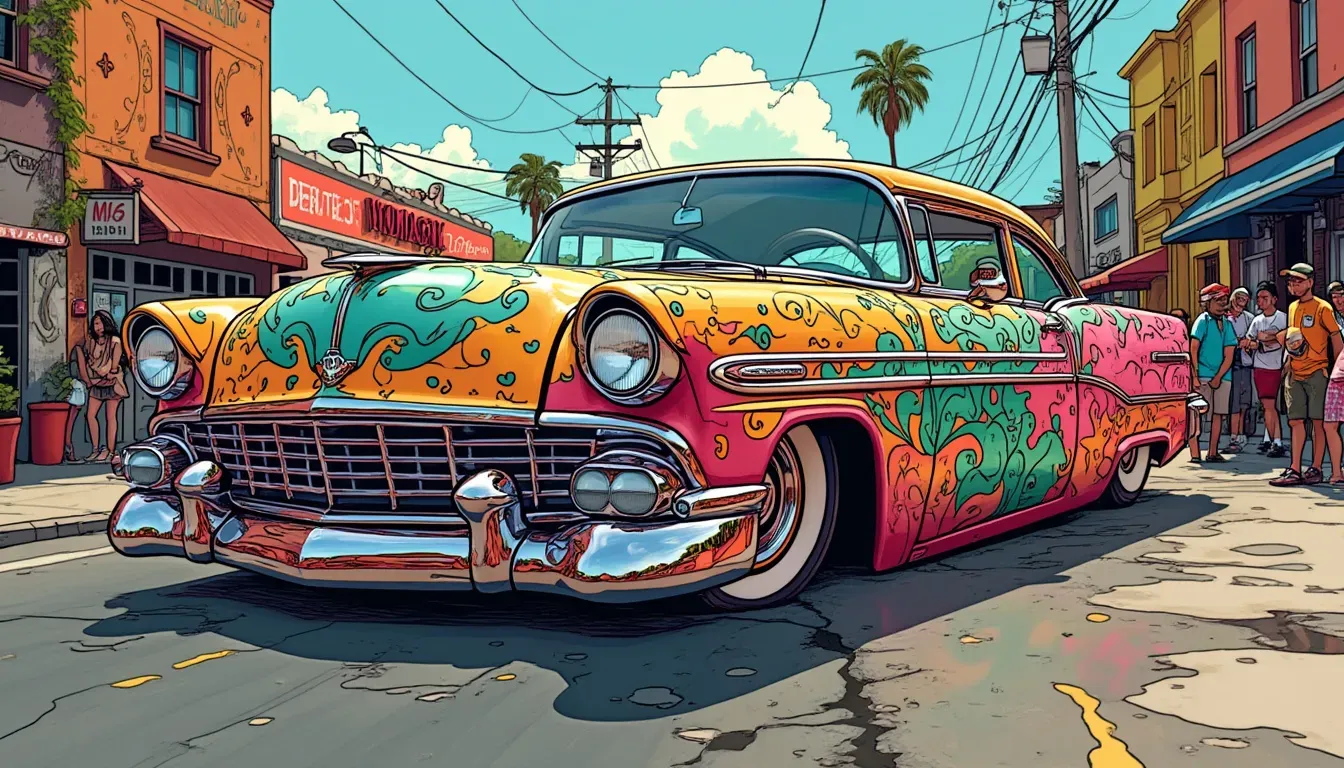Introduction
Lowriding, a vibrant and controversial aspect of American culture, has long been misunderstood. This article explores how the world of lowriders parallels the rise of technology in Silicon Valley and challenges stereotypes by celebrating the unique cultural heritage of car customization. From the visionary beginnings in the streets of San Jose to a worldwide historical movement, lowriding tells a deeply personal and communal story.
The Dawn of Lowriding
In 1976, as Steve Jobs and Steve Wozniak were busy revolutionizing personal computing with their first Apple computer in a modest garage in Los Altos, California, another kind of revolution was taking place—this one transforming a simple car into a captivating piece of art. As Jobs and Wozniak sparked their technological dreams, lowriders were flipping the expectations with creative car customization on the streets of San Jose, the very heart of Silicon Valley.
Lowriding in the '70s was more than just altering cars—it was about challenging norms and embracing a culture that celebrated individuality and creativity. Just like Apple encouraged people to "think different," lowriding enabled people to "be different."
The Cultural Canvas
The lowriders weren't just about cars; they were about expressing identity, resilience, and diversity. In the early days, the streets of Silicon Valley saw a different kind of genius at work—a genius that turned vehicles into vibrant symbols of an artistic and cultural movement. The red lowrider with its Technicolor shine and hydraulic prowess became a symbol of this era's creativity.
Growing up in the age of Game Boys and MTV, without the breadth of the internet until 1995, many people had limited access to diverse stories and cultural narratives. Yet, within the lowrider community, stories and identities flourished, passed down through generations in ways that mainstream storytelling ignored.
Personal Journey into Lowriding
Reflecting on this historical richness, one individual's journey into the world of lowriders began with books about the Chicano experience. Inspired by family history and conversations about working with civil rights leaders like Cesar Chavez, this personal exploration led to discovering and appreciating the lowrider culture.
As this personal story unfolded—right from inheriting classic cars to participating in the culture—the realization dawned that the stories that populated mainstream narratives lacked authenticity and representation. This gap led to the creation of a project called "The ABCs of Lowriding," an insider's take on a history overlooked in classrooms.
Beyond Stereotypes
Lowrider culture, often depicted with negative connotations, was replete with stereotypes that skirted around the true essence of the community. However, the reality is the lowrider community is diverse, full of electricians, carpenters, doctors, and engineers—all contributing to its vibrant life.
Lowriding is not just a movement. It is a legacy in motion.
Rewriting these narratives involves correcting misinterpretations, revealing that lowriders are more than what one sees at the surface. Understanding lowriding requires living it, experiencing it, and passing down the collective memories of its rich tapestry.
Voices of the Pioneer Lowriders
One cannot talk about lowriding without honoring its storytellers—people who lived, breathed, and crafted the lowrider scene. From Sonny Madrid, who launched the Lowrider Magazine, to untold stories behind iconic lowrider logos, voices from the past serve as vital linchpins connecting history.
Without documenting these narratives, people outside the lowrider experience may continue to misinterpret its significance. It is crucial for community members to share the real stories that often remain hidden in garages, out of sight yet vibrant with creativity.
Recognition and Revolution
Today, lowriding has transcended stereotypes, enjoying a renaissance where former criminalities turn into celebrations of cultural pride. Legislation that once targeted lowriding communities is reevaluated, reflecting broader acceptance and appreciation.
From the local streets of California to the roads of Japan and beyond, lowriding resonates with cultural pride and historical significance. What began as an indigenous cultural movement is now a testament to expression, resilience, and unity across borders.
Conclusion
The road reflects more than just the shine of a beautifully crafted lowrider; it tells stories—a legacy in motion that redefines what it means to preserve, protect, and celebrate a culture uniting generations with creativity and shared experience. Embracing lowriding means participating in a rich culture, taking pride in heritage while carving a path toward mutual understanding and respect.
Ultimately, lowriding embodies the principles of artistic expression and shared history, shining as timeless art on the changing roads of our broader society.
YOUTUBE, CARS, HISTORY, CREATIVITY, CULTURE, LOWRIDING, SILICON VALLEY, CHICANO EXPERIENCE

